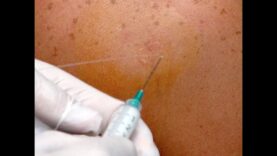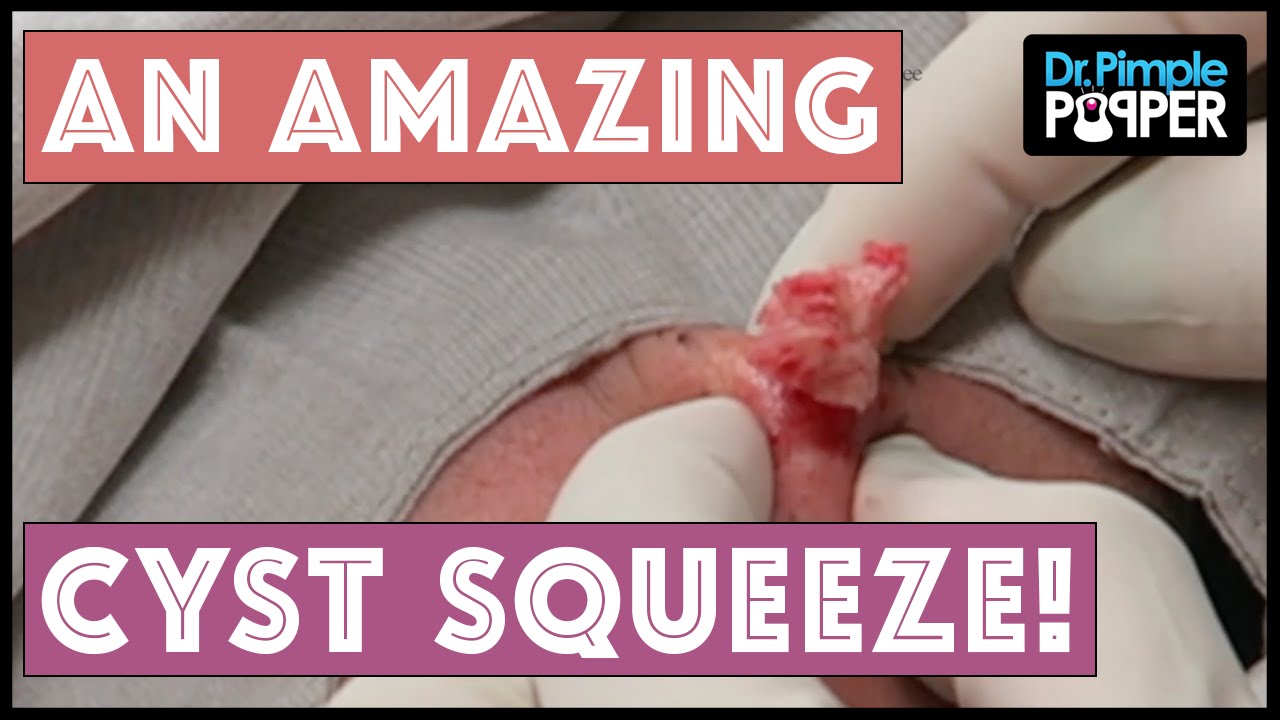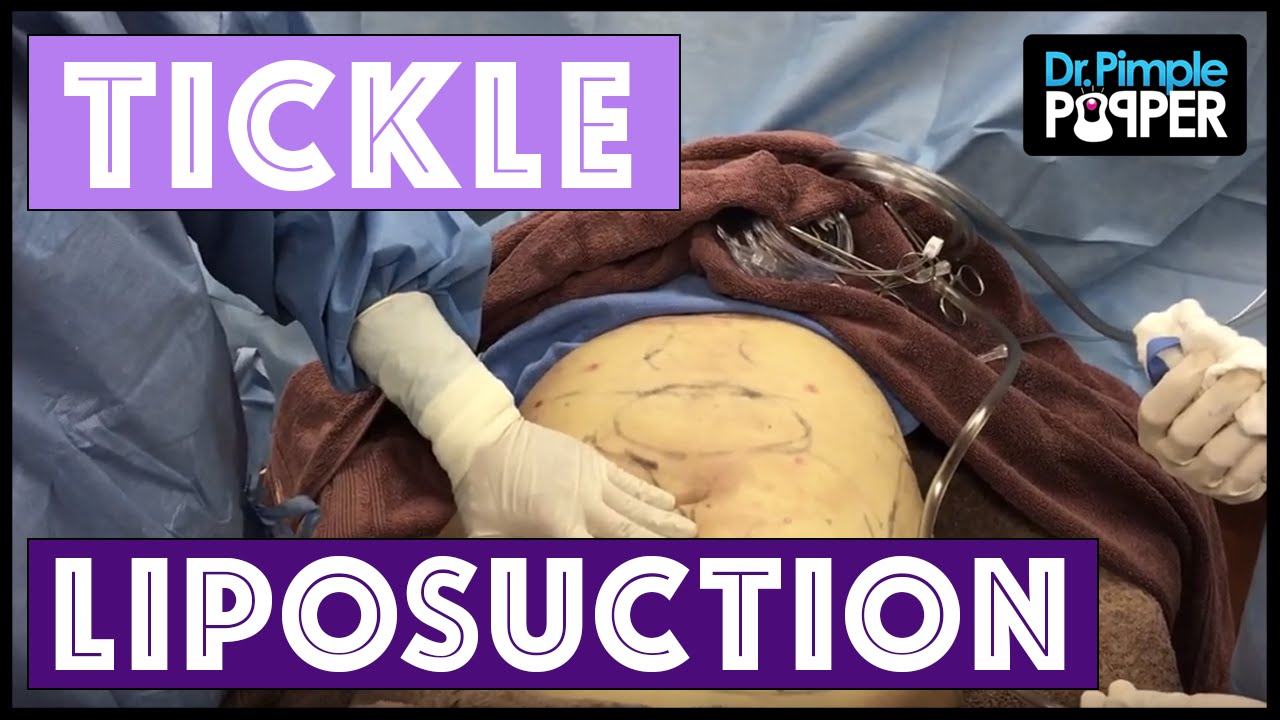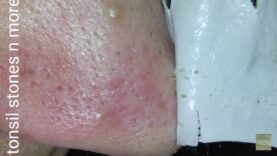Guess the Diagnosis After Seeing the Microscopic Pathology! Are you a Wanna Be Dr Pimple Popper!?
Want to watch the complete ORIGINAL video? Here are the LINKS:
So Far the LARGEST lipoma I’ve removed for YouTube: Dr Pimple Popper
What if we grew Diamonds Under our Skin?!
An Extra Elbow, a Floatation Device, or an Epidermoid Cyst? – Part 1 of 2
An Extra Elbow, a Floatation Device, or an Epidermoid Cyst? – Part 2 of 2
A Clean Pilar Cyst Pop!
An epidermoid cyst (Epidermal Inclusion cyst, Infundibular cyst), is a benign growth commonly found in the skin and typically appears on the face, neck or trunk, but can occur anywhere on the body. Another name used is “sebacous cyst” but this is actually an antiquated misnomer, and is not a term used by dermatologists. They are also the most common type of cutaneous cysts. Epidermoid cysts result from the reproduction of epidermal cells within a confined space of the dermis. The pasty contents are mostly composed of macerated keratin (wet skin cells), which creates this “cheesy” consistency, and there can be a pungent odor. An epidermoid cyst may have no symptoms and are typically harmless. Usually people seek removal but they don’t like the appearance of these bumps, or the cyst has ruptured or been inflamed or “infected” in the past. Rupture is associated with sudden redness, pan, swelling, and local heat, and can lead to abscess formation. Also, a history of inflammation, often increases scar tissue in the area, makes the cyst more firmly adherent to surrounding skin, and makes it more difficult to remove. Surgical excision is curative, but the complete cyst removal including the entire cyst sac and contents need to be removed to ensure that the cyst won’t reoccur.
A Pilar Cyst, aka a trichilemmal cyst, an isthmus-catagen cyst, or a “wen”, looks identical on examination to the more common epidermoid cyst, except that 90% of them occur on the scalp. They tend to be more mobile and firmer than epidermoid cysts, and are derived from a different part of the hair follicle/skin. The internal content tend to be more “homogenous”/ smooth (looks different under the microscope), but it is also a benign growth. It is not uncommon to have multiple pilar cysts on the scalp and to have other family members to have these cysts (tend to run in families). Treatment is for cosmetic reasons usually (people don’t like the appearance of them), and excision with removal of the cyst and it’s contents is curative.
A lipoma is slow-growing, benign growth of fat cells. It is contained in a thin, fibrous capsule and found right under the skin. A lipoma is typically not tender and moves around easily with slight pressure. A lipoma is not cancerous and treatment generally is not necessary. There is also a condition called familial lipomatosus, where people develop multiple lipomas, especially on the arms and legs, and other family members have these growths as well. If the lipoma is on a pressure-bearing area, it may create discomfort and this is when people seek removal. People also request removal because they don’t like the appearance of these bumps. Often a small incision can be made over the lipoma and they can be “popped” out easily. This is a simple in-office surgical procedure under local anesthesia.
Subscribe to my Dermatology educational channel, Dr Pimple Popper University! Link is here:
https://www.youtube.com/channel/UCvaD01Jb_ruxsAcVqVmTHzQ
To buy your own Official Dr. Pimple Popper Comedone Extractor, click here:
https://www.drpimplepopper.com/product/extractor/
For more content, exclusive content, and of course to get more Dr. Pimple Popper schwag, visit us at www.drpimplepopper.com!
Instagram:
@DrPimplePopper for 24/7 pops
@DrSandraLee for my work, my life, my pops
Facebook: facebook.com/DrSandraLeeDermatology
Twitter: @SandraLeeMD
Snapchat: drpimplepopper
Periscope: Dr. Sandra Lee
You can watch my TV appearances here:
https://www.youtube.com/channel/UCOixDRVQAsKe4STSuWU8U0Q
This video may contain dermatologic surgical and/or procedural content. The content seen in this video is provided only for medical education purposes and is not intended to be a substitute for professional medical advice, diagnosis, or treatment.
source











